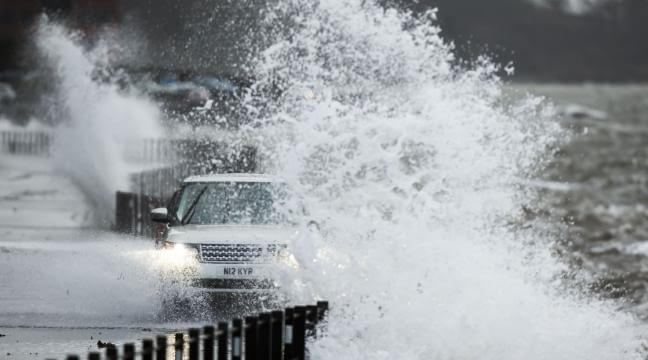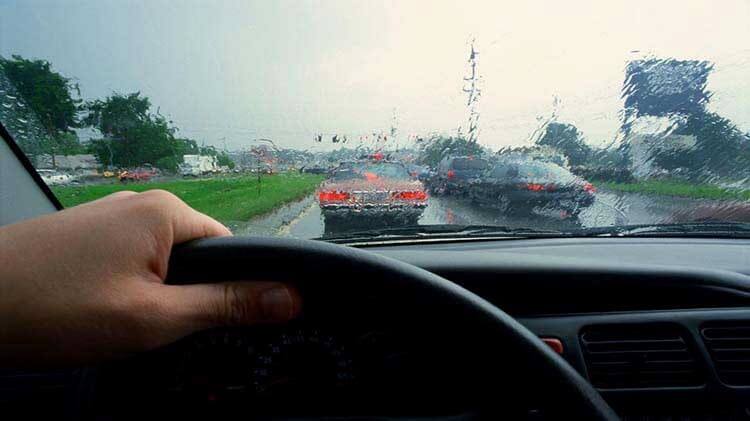8 Important Things to Know When Driving in the Rain
Driving in the Rain Safety Tips
ALL TOPICS
- YouTube Parental Control
-
- How to see your YouTube history?
- What is Metaverse? Parent Guide
- Put parental controls on YouTube
- Delete TikTok Account without Phone Number
- Ways to block YouTube channels
- Ways to Get Somone's IP Address and Hide IP Address
- A complete guide on YouTube parental control
- What is Fanfiction? Parents Guide
- Kids safe YouTube alternative
- Top 5 TikTok Alternatives
- Methods to restrict YouTube adult content
- Social Media App Parental Controls
- Parental Control Tips
Sep 11, 2024 Filed to: Teen Driving Tips Proven solutions

One of the challenging situations a driver may face is a rainy condition. Irrespective of a sprinkle or torrential downpour, high accident rates are a common occurrence in these situations. Driving in such weather can be extremely hazardous. Rainy conditions almost always lead to accidents, regardless of where you reside. Then again, hundreds and thousands of drivers rule the streets during rainy conditions. How do they do it? Do they possess better driving skills than you? It could be possible that they have more experience, but they’re also aware of the strategies that would keep them safe on wet streets. Here you’ll find a few guidelines that will help you scale any road while it’s raining cats and dogs.
What makes driving in the rain dangerous?
Loss of traction takes place on wet roads when tires start losing their grip. Several precautionary measures will assist in driving in rain safety.
- The tires don’t yield: First of all, rain prevents a vehicle from performing optimally. The tires simply refuse to hold on to the roads when water on the surface gets mixed up with dirt on the asphalt surface. Additionally, rain pushes motor oils to the street’s surface that further decreases tore traction.
- The human element: The rain almost always affects the driver’s visibility, roadside awareness, and driving capabilities. Apart from that, you may start experiencing hydroplaning where even if you do not lose full control of vehicles, you may still face sliding or skidding. However, hydroplaning generally affects cars that are traveling faster than usual.
- Followers and water build-up: Cars that follow too closely don’t leave enough room to stop during emergencies. Along with that, water goes under the tires due to pressure buildup on the front wheels. A thin layer of water acts as a separator between the tire and the road paving. The ultimate result is steering failure and temporary loss of the braking system.

Things that you keep in mind when you are driving in the rain
Follow driving in the rain safety tips to avoid traffic crashes. Safety should be a matter of topmost priority even before you take your place behind the wheels.
- Avoid driving with worn-out tires:You need your car’s tires to be in top-notch condition. Otherwise, you can never expect it to be safe to drive in the rain. Even the best tires in the world wouldn’t be able to provide enough traction if they experienced significant wear and tear. The problem arises from the tread depth. If it isn’t sufficient, then it won’t be able to displace sufficient amounts of water. The grooves that you see on the tires of automobiles help in channeling water from the surface.
- Decrease speed immediately: What if the rain starts pouring down while you’re driving? You should decrease the speed of your car immediately. Adhering to the speed limit is mandatory to keep the roads safe, and it’s especially true during the rainy season. One should always drive slower on wet roads compared to dry streets.

- Go gently: You should never apply too much of anything in your vehicle when it rains. It means that you can’t hit the brake, accelerator pedal, or the steering wheel too hard. If you aren’t gentle with the brake, then your car will inevitably skid. You may argue that your machine is a new one with advanced ABS systems installed, but do you want to take the risk? That’s why it’s always safer to brake gently. Something similar can happen if you apply aggressive pressure on the gas pedal or the steering wheel.
- How to control it: Indeed, you can’t always prevent skidding off the road when it’s raining heavily. Besides, if your tires aren’t up to the mark, then you may have to face such a situation. So, if your front-wheel-drive vehicle starts sliding outside of the turn, you should lift your foot off the gas gently. As you do that, try to maintain the angle of the steering wheel until you can bring the automobile back on track. Things can be a bit more complicated if the rear wheels start skidding. When you apply the brake and turn into a corner, you should hit the accelerator pedal lightly. This action should prove immensely helpful.
- Maintain safe distance: Braking distances are always much longer on wet roads than the dry ones. That’s why experts recommend that you maintain as much distance as possible between your car and the one in front of you. In doing so, you’ll get more time to react and brake accordingly.

- Be wise with the wipers: Every vehicle has two wipers on the windshield, and they operate at different speeds. Naturally, you need to use them according to the amount of rain outside. It’s crucial for driving safely during wet conditions because rain can reduce visibility significantly. Modern vehicles have almost three to four wiper speeds. Additionally, they even have intermittent speeds that actuate them at specific intervals. If it’s raining lightly, you should activate the wiper only for a few seconds and at lower speeds. Conversely, if it’s raining heavily, then you should keep them turned on at higher speeds.
- Avoid standing water: While splashing through puddles may seem exciting at times, especially if a youngster is holding the wheel, it can introduce the problem of hydroplaning. Hence, you must avoid deep-standing water no matter where you encounter it. Then again, this idea won’t work if you can’t avoid it because you may notice the puddle right before entering it. During that moment, make sure that you don’t turn the steering wheel abruptly. Also, ease off the accelerator as you pass through it.

- Stay alert: Driving incorporates your hands and your legs, but everything remains under the control of your mind. So, if you keep your head clear, then you should always pass unscathed. Besides, you won’t be able to adhere to the tactics given here if you don’t remain alert while driving. Keep asking yourself whether you’re driving too fast or not, or if you’re too close to other vehicles or not. Moreover, keep tabs on everything that happens on the street. Pay attention to cars and pedestrians continuously, but also observe the puddles, potholes, etc.
Taking a cautious approach
Rain always makes driving more challenging, and it has been the reason behind hundreds of mishaps in the past. However, innumerable people swagger down the streets in their automobiles when it seems as if the skies would crash on the earth. These people are aware of the tips given above, and they follow those guidelines to the letter. If you can do the same, then you’ll be able to drive like them as well.
Apart from that, you should attempt to improve your driving habits because there is always something to learn, no matter the subject. To help yourself form a good driving habit, you may use FamiSafe's Driving Reports to track your driving details like average speed, high speed, number of hard break or check the weekly driving summary. This way, you will better understand your own drivng habits and make adjustment is needed.
- Location Tracking & Geo-fencing
- App Blocker
- Web Filtering
- Screen Time Control
- Smart Parental Control Setting
After all, if you become a better driver, then you’ll be able to save yourself, your family, your friends, and those who walk or drive on the streets like fools. So, consider following these driving in the rain safety tips and becoming a better driver. Then you won’t have to stare at those who maneuver their vehicles smoothly under the rain and wonder how they do it.

Moly Swift
staff Editor